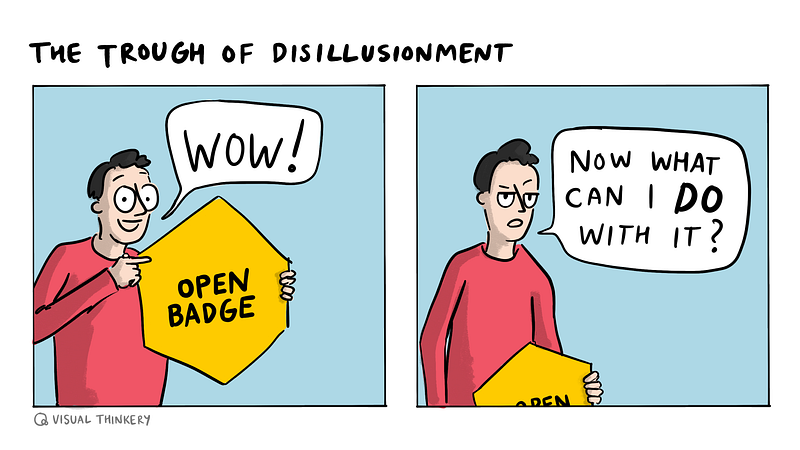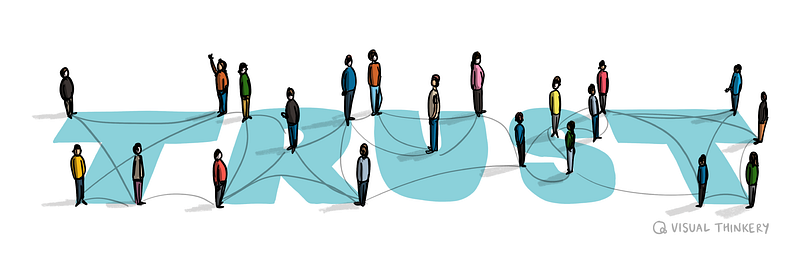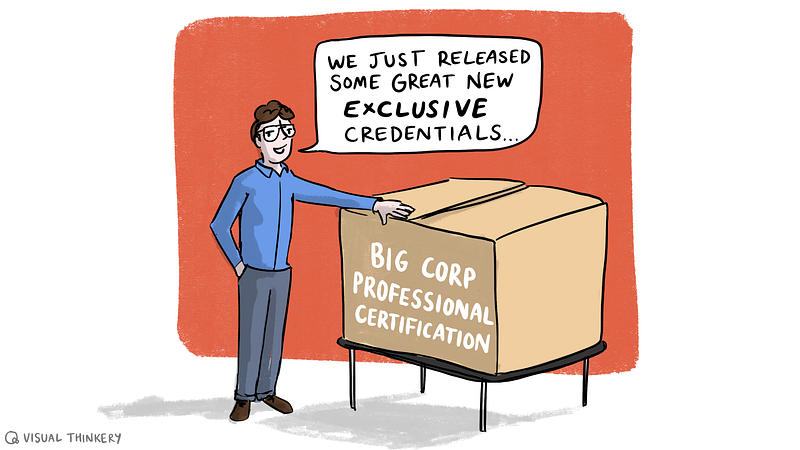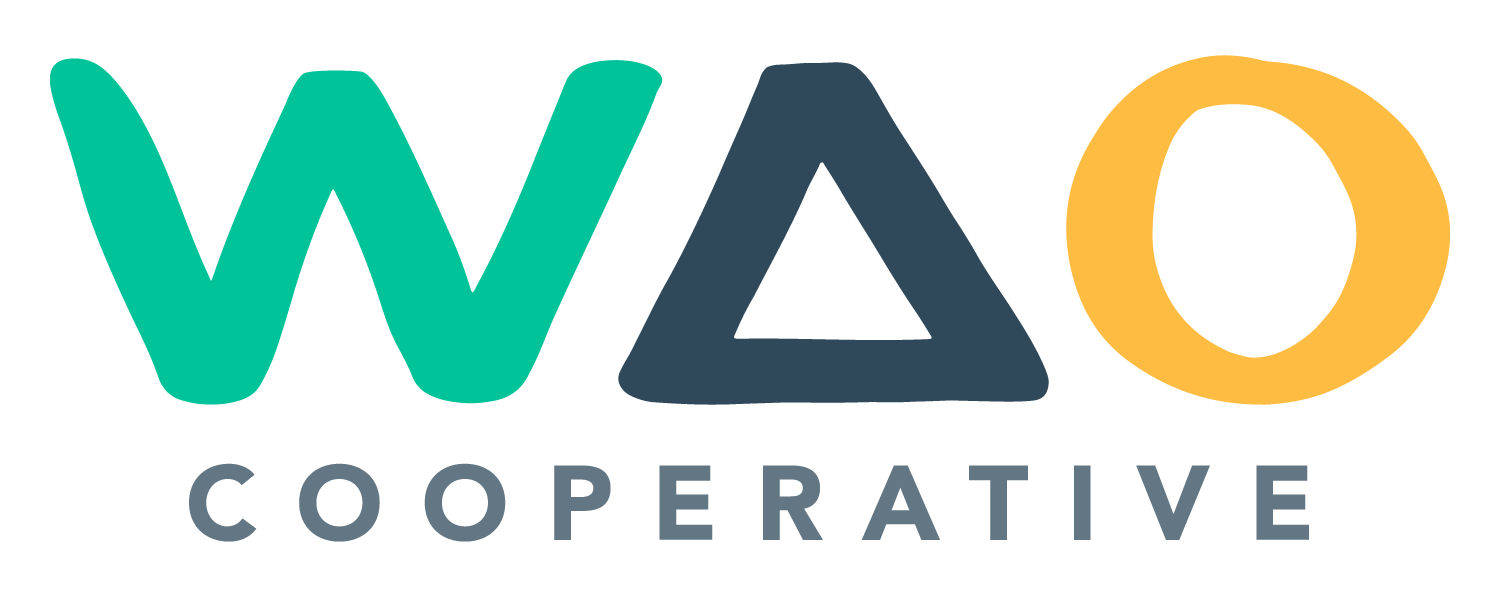Making Credentials Work for Everyone
How to think about the three-sided marketplace of skills validation


After more than a decade of working with digital credentials like Open Badges and Verifiable Credentials, we still sometimes hear the sceptical question: “Who’s asking for this?”
While digital credentials offer far more than just helping people into a job, this remains a significant and powerful use case. However, creating an ecosystem where this is not only possible but also straightforward takes time. It’s a complex, three-sided challenge that requires more than simply asking users what they want; it involves anticipating their needs and providing innovative solutions that work for everyone involved.

The Appeal of Credentials
People and organisations are often attracted to digital credentials for their potential to recognise and validate a broad range of skills and achievements. They can help democratise learning, making it accessible and recognisable beyond traditional educational settings. For learners, these kind badges represent an opportunity to showcase their skills in a way that is immediately recognisable — and verifiable.

Challenges
Despite the initial excitement, many individuals and organisations find themselves asking, “Now what?” In our experience, this question stems from several challenges. Earners can sometimes have a lack of clarity on how to effectively use badges in practice, and so struggle to see how these credentials translate into real-world opportunities.
Issuers such as educational institutions and other organisations may find it difficult to convince stakeholders of the value of alternative credentials. Meanwhile, employers may exhibit uncertainty about the validity and relevance of these badges, leading to hesitation in recognising them as part of the hiring or promotion process.

Understanding the Three-Sided Marketplace
To address these challenges, it’s important to understand the interplay between the three main groups involved: earners, issuers, and employers.
- Earners: These are individuals who seek to acquire credentials to validate their skills and knowledge. A significant proportion are already using digital credentials in the application process, with their main concern being whether these badges will be recognised and valued by employers and educational institutions.
- Issuers: These include schools, universities, and other organisations that award credentials. Their challenge is to establish the credibility and relevance of their badges as a form of skills currency.
- Employers: These are the entities looking to hire or promote individuals with verified skills. Fewer than half of employers say that they find university transcripts useful in helping them to evaluate job applicant’s potential to succeed at their company. So they need a quick and easy way to verify skills in a way that is a reliable indicator of ability.

Shifting the Question
So, rather than asking, “Who’s asking for this?” perhaps we should instead focus on understanding the needs and motivations of each group in this marketplace. By shifting our perspective, we can better appreciate the value of credentials and work towards making them more effective.
Just look at the progress we’ve made as an ecosystem:
✅ Clear value proposition — digital credentials offer tangible benefits, like job opportunities and career advancement, by validating a wide range of skills. Secure, digital wallets make it possible for earners to feel like they truly own and control their credentials.
✅ Widespread adoption and recognition — increasing numbers of institutions and employers are recognising and accepting digital credentials, thanks to the work of organisations such as the Digital Credentials Consortium (DCC), Jobs for the Future, and The RSA.
✅ Robust technology infrastructure — advanced platforms and secure technologies are being developed to support issuing, verification, and management of digital credentials, based on foundational work of standards organisations 1EdTech and the W3C.
✅ Collaboration between key industry bodies — industry leaders, educational institutions, and technology providers are working together to standardise and promote the use of digital credentials. See, for example, the work around SkillsFWD, Opportunity@Work, and the T3 Innovation Network, and networking at events such as The Badge Summit and ePIC.
✅ Data standards and taxonomies — establishing consistent data standards and taxonomies helps in creating interoperable systems where credentials can be easily shared and verified across different platforms. Credential Engine has developed the Credential Transparency Description Language (CTDL), supporting comparability across credential types and providers.
A huge amount of funding and effort has gone into getting us to this place. It’s going to take more money and time to get us over the line, so where should we focus our attention?

Creating Value for All Sides

To make digital credentials truly valuable for jobseekers, we need to address the concerns of all three groups:
- For earners: Credentials should lead to tangible benefits, such as job opportunities or career advancement. We need clear pathways for using certain types of badges, with examples of how and where digital credentials have successfully led to job offers or promotions.
- For issuers: It is crucial to developing robust standards such as Open Badges 3.0 to promote the credibility of their badges. Issuers can collaborate with industry leaders to ensure their credentials remain relevant and respected, as well as regularly updating the criteria for earning these badges based on industry needs.
- For employers: Providing tools and frameworks to easily interpret and trust these badges will encourage wider acceptance and use. Employers can partner with educational institutions to co-create badges and/or develop practical tests to verify the skills claimed by the credentials.

Final Thoughts
In summary, the question “Who’s asking for this?” may not be the most productive one. Instead, we should focus on understanding the interconnected roles of earners, issuers, and employers in the credentialing process. By doing so, we can move beyond the trough of disillusionment and realise the full potential of these new forms of recognition.
At WAO, we’ve been working closely with the Digital Credentials Consortium (DCC) on storytelling and communications strategies that help everyone understand and embrace the value of digital credentials. The DCC is a key player in the ecosystem, and one of a number of organisations helping build a future where Open Badges and Verifiable Credentials are a natural and trusted part of the hiring process.
🔥 Do you need help with digital credentials? Check out WAO’s free, email-based Reframing Recognition course, or get in touch! You may also like to check out WAO’s Compendium of Credentialing

Discussion